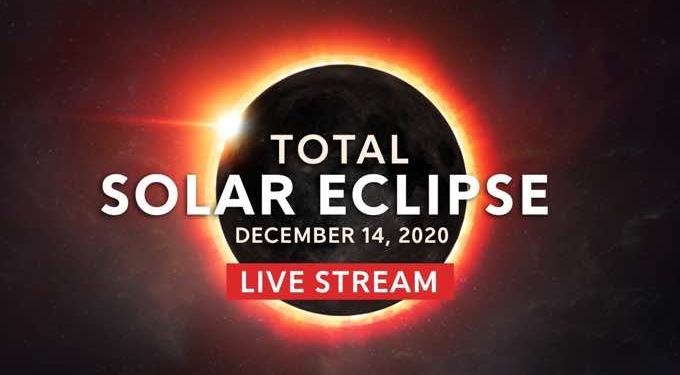https://www.youtube.com/watch?v=EUZcZ7Bqi5M
SOURCE FOR ABOVE VIDEO. Here's another live stream SOURCE:
Article Source: Space.com
The only total solar eclipse of 2020 is coming up this Monday (Dec. 14) and here's how you can follow along with its phases.
The total solar eclipse, which is the last eclipse of 2020, will be visible to observers across a narrow swath of the South Pacific, Chile, Argentina and the southern Atlantic Ocean, while a partial eclipse will be visible from a wider region in the Pacific, southern South America and Antarctica.
Solar eclipses occur when the moon appears to pass in front the sun as viewed from Earth. When they line up exactly, the moon covers the entire sun and causes a total eclipse, while at other times it only covers part of the sun in a partial eclipse. There is not a solar eclipse every month because the moon's orbit is tilted with respect to the sun and does not always align with the star.
What time is the solar eclipse?

So how will the 2020 solar eclipse play out?
The partial phase eclipse will first begin at 8:33 a.m. EST (1333 GMT) and be visible to observers way out in the Pacific Ocean, thousands of miles off the southeast coast of the Hawaiian Islands. The total phase of the eclipse will first be visible almost an hour later at 9:32 a.m. EST (1432 GMT).
Maximum eclipse, or the moment of greatest eclipse where the eclipse has the longest totality (or time where the sun is covered by the moon), kicks off a couple of hours later at 11:13 a.m. EST (1613 GMT). The point of greatest eclipse will occur 18 miles (29 kilometers) northwest of the village and municipality Sierra Colorada in Argentina.
The last observers with a chance to view the total eclipse will catch the last glimpses at 12:54 p.m. EST (1754 GMT) while the last to view the partial eclipse will last see it at 1:53 p.m. EST (1853 GMT).
















